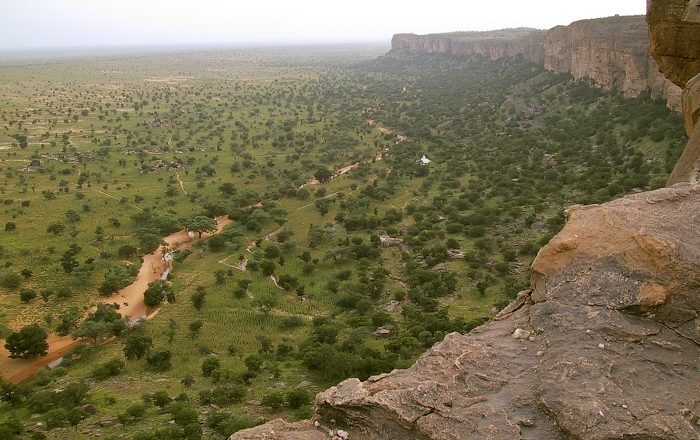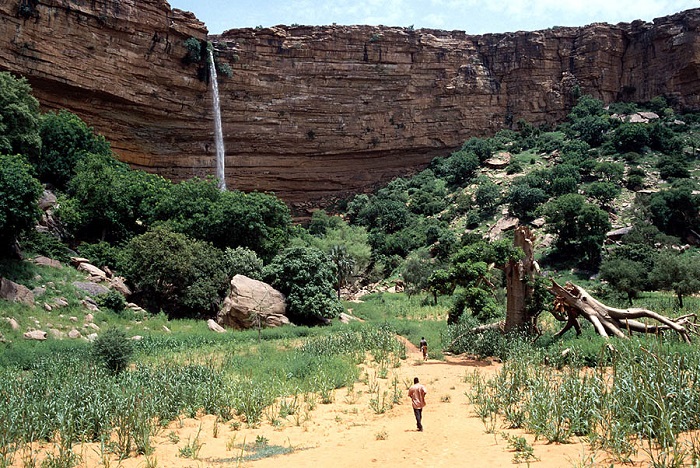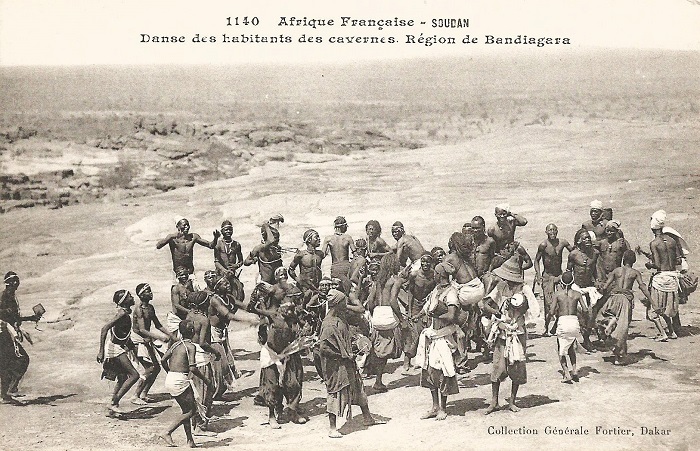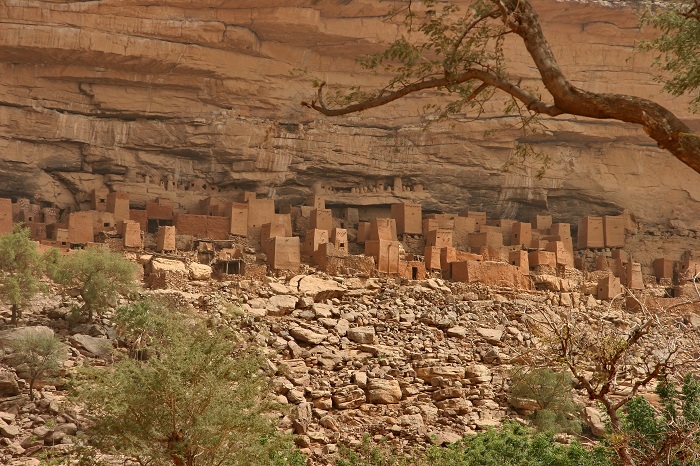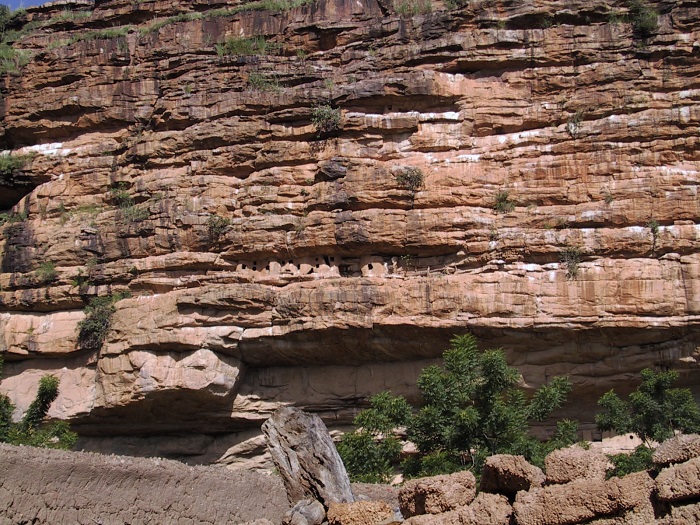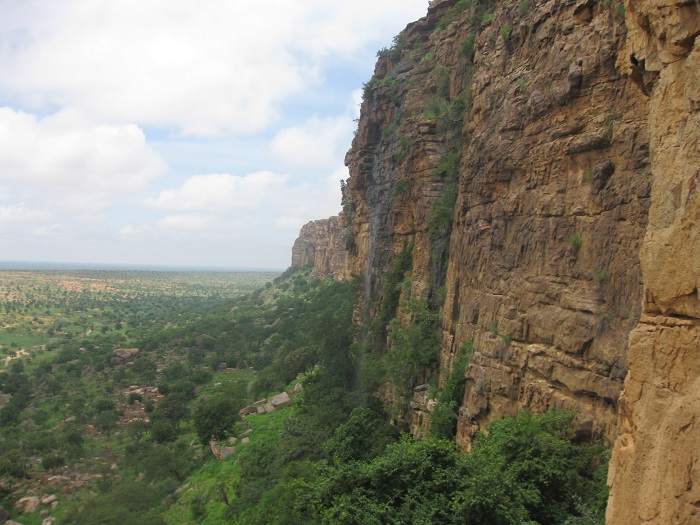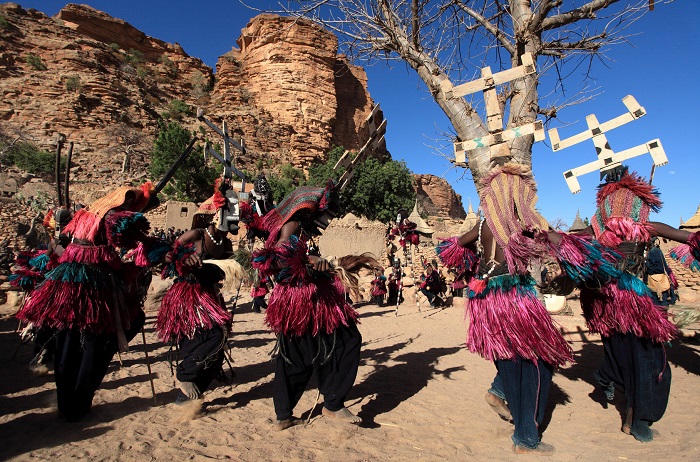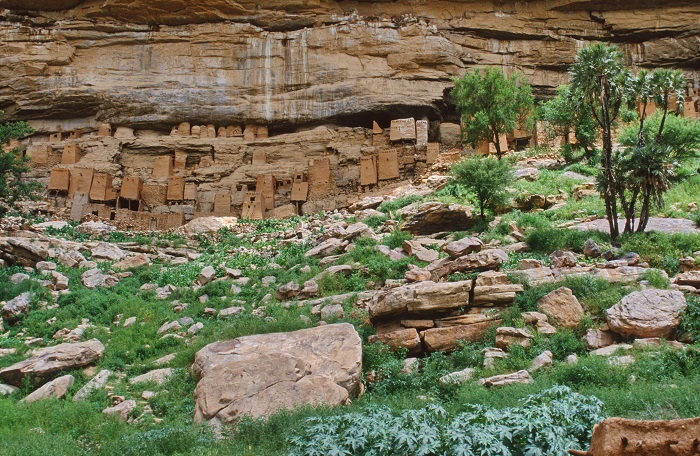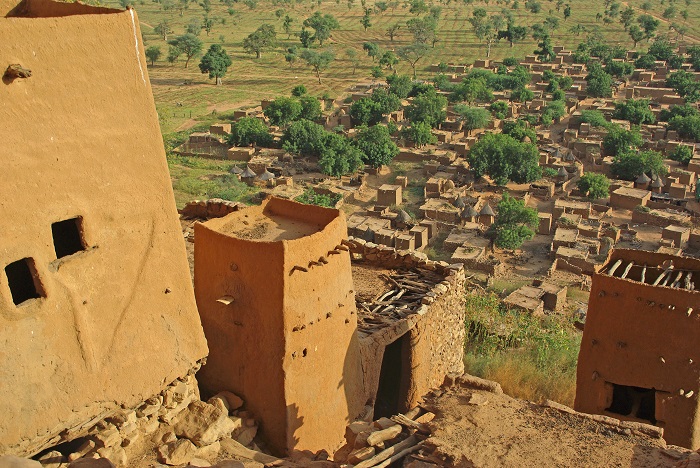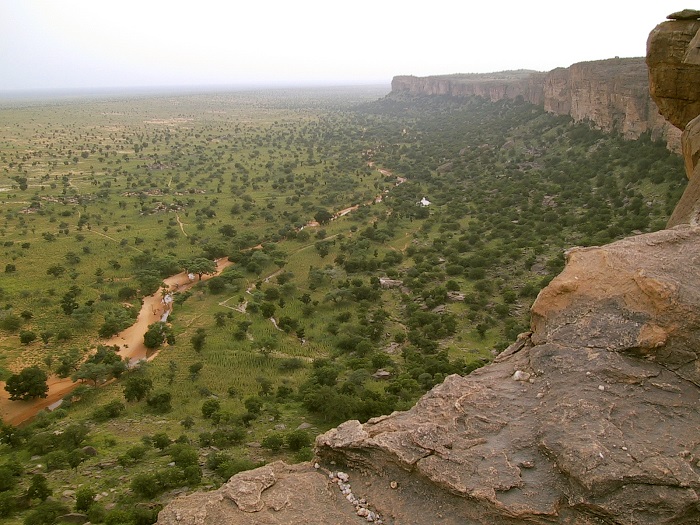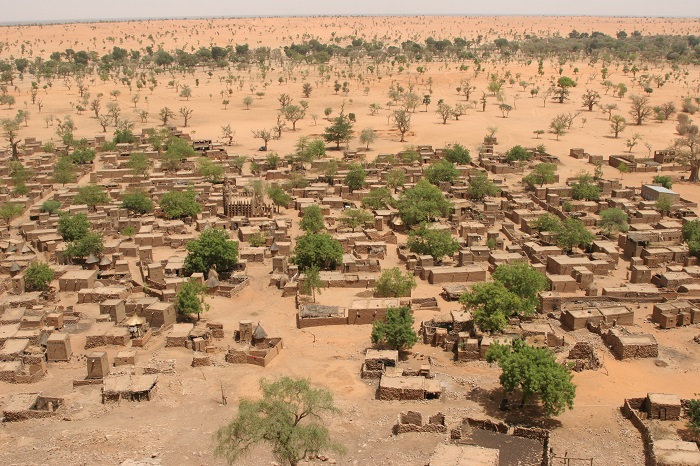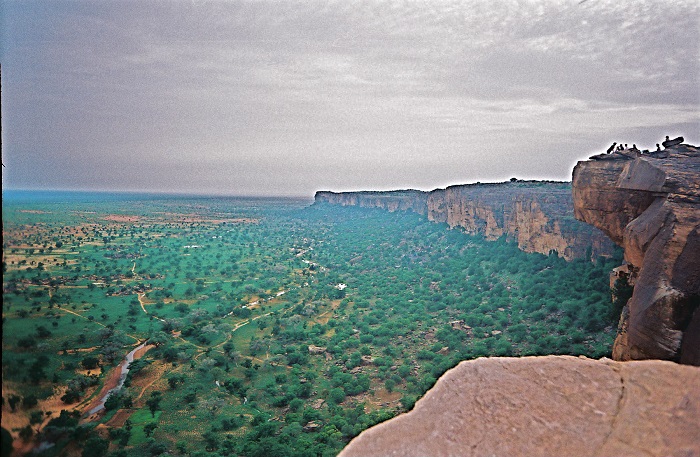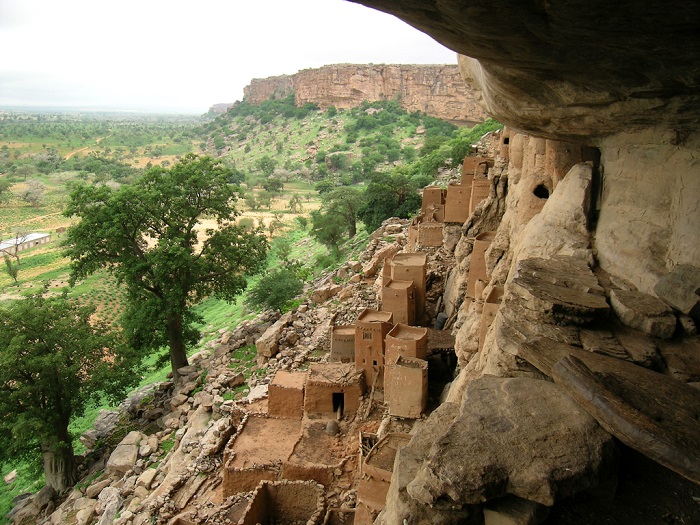The Bandiagara Escarpment is a vast sandstone cliff rising dramatically from the surrounding plains that is located in the central-eastern part of the Mopti Region, within the southern part of the Republic of Mali. Stretching for over 150 km (93 mi) and reaching heights of up to 500 m (1,640 ft), this striking geological formation has been home to human civilizations for centuries and remains one of the most culturally and historically significant sites in West Africa.
The history of the Bandiagara Escarpment is deeply connected to the Dogon people, who have inhabited the region for over a thousand years, however, before their arrival; the area was occupied by the Tellem who were an ancient people who built distinctive mud-brick dwellings high into the cliff faces. The Dogon are believed to have migrated here between the 13th and 16th centuries as they were escaping persecution and seeking a defensible location, but over time, they incorporated many aspects of the Tellem’s architectural and agricultural techniques, preserving the legacy of their predecessors while developing their own unique way of life.
The escarpment was formed by geological processes, tectonic uplift, and gradual movement of the Earth’s crust over millions of years. Its dramatic gorges and steep cliffs were carved out by water and wind progressively wearing away the sandstone rock which made it perfect as it provided natural shelter and a nice ambiance for living, with overhangs and caves providing protection against the harsh Sahelian environment.
To dig deeper into the creation of this mesmerizing natural feature, the escarpment’s formation is a product of ancient geological processes, primarily involving the erosion of sandstone. Tectonic activity initiated the uplift that created the plateau, and subsequent weathering and erosion sculpted the dramatic cliffs.
Over vast periods, primarily water, particularly seasonal runoff, and ancient river systems, carved out the ravines and gorges, and to top this, wind that was carrying abrasive sand further shaped the rock faces, contributing to the intricate pattern formations visible today. The varying hardness of the sandstone layers resulted in the diverse features of the escarpment, including overhanging cliffs, caves, and rock towers.
The historical and cultural importance of the Bandiagara Escarpment cannot be overemphasized because it is not only an archaeological marvel but also a vibrant cultural landscape in which practices, rituals, and traditions of bygone eras have been passed down through generations. The land is spiritually linked with the people, and villages have been built in reverence to the cliffs where their elaborate masked dances, their raucous fiestas, and scrupulously kept word-of-mouth tradition convey a Weltanschauung deeply rooted in their previous beliefs.
Since the escarpment is known for its outstanding cultural and natural significance, with its history and significant importance, the Bandiagara Escarpment was inscribed as a World Heritage Site by UNESCO in 1989. The reason for doing this is to help in the landscape protection and also the rich culture associated with it, however, sadly the site is faced with the threat of climate change, deforestation, and the pressures of modernization that threaten the Dogon’s continuity of life. There are still conservation efforts that are ongoing, and both local and international organizations are taking steps to preserve this strange heritage.
As this majestic natural landmark was important for the people that inhabited it in the past, and as they continue to live and thrive, the towns of the Dogon nowadays are still an important part of the region’s fabric. They are all unique, with earth structures and ornate granaries for the millet which is their staple grain. The structures are not only practical but symbolic and symbolize social stratification and religious ideas. The majority of the towns are situated on the cliffs, something that is considered a defensive posture that was borrowed from their ancestors. Despite modernization, certain traditional practices are still present, and the Dogon still practice farming, blacksmithing, and pottery, balancing their heritage and modern times.
As mentioned before, the Bandiagara Escarpment was once a natural fortress protecting its inhabitants from outsiders, where the rugged and isolated position provided cover against invaders, and consequently, the Dogon culture prospered. Today, the escarpment remains a major heritage tourism destination, as tourists, historians, and anthropologists visit to experience its lively traditions and scenic views. The rock paintings, ancient houses, and holy grounds of the escarpment provide valuable insights into the centuries-long history of the area.
Visitors to the escarpment are able to walk among its villages, hike along its cliffs, and observe Dogon culture firsthand. Guided visits are an interactive experience, allowing tourists to learn about Dogon cosmology, observe traditional ceremonies, and view remnants of the also important Tellem civilization, and the dry season between November and February is the best time of year to visit, when temperatures are less extreme and road access is more convenient.
Overall, the Bandiagara Escarpment stands as a testament to the resilience of the people who have lived along its cliffs for centuries. With its stunning natural beauty, rich cultural traditions, and deep historical significance, it remains one of Mali’s most remarkable sites, and its preservation is not just about protecting an ancient landscape but also about ensuring that the stories, traditions, and knowledge of the Dogon people continue to inspire future generations.

